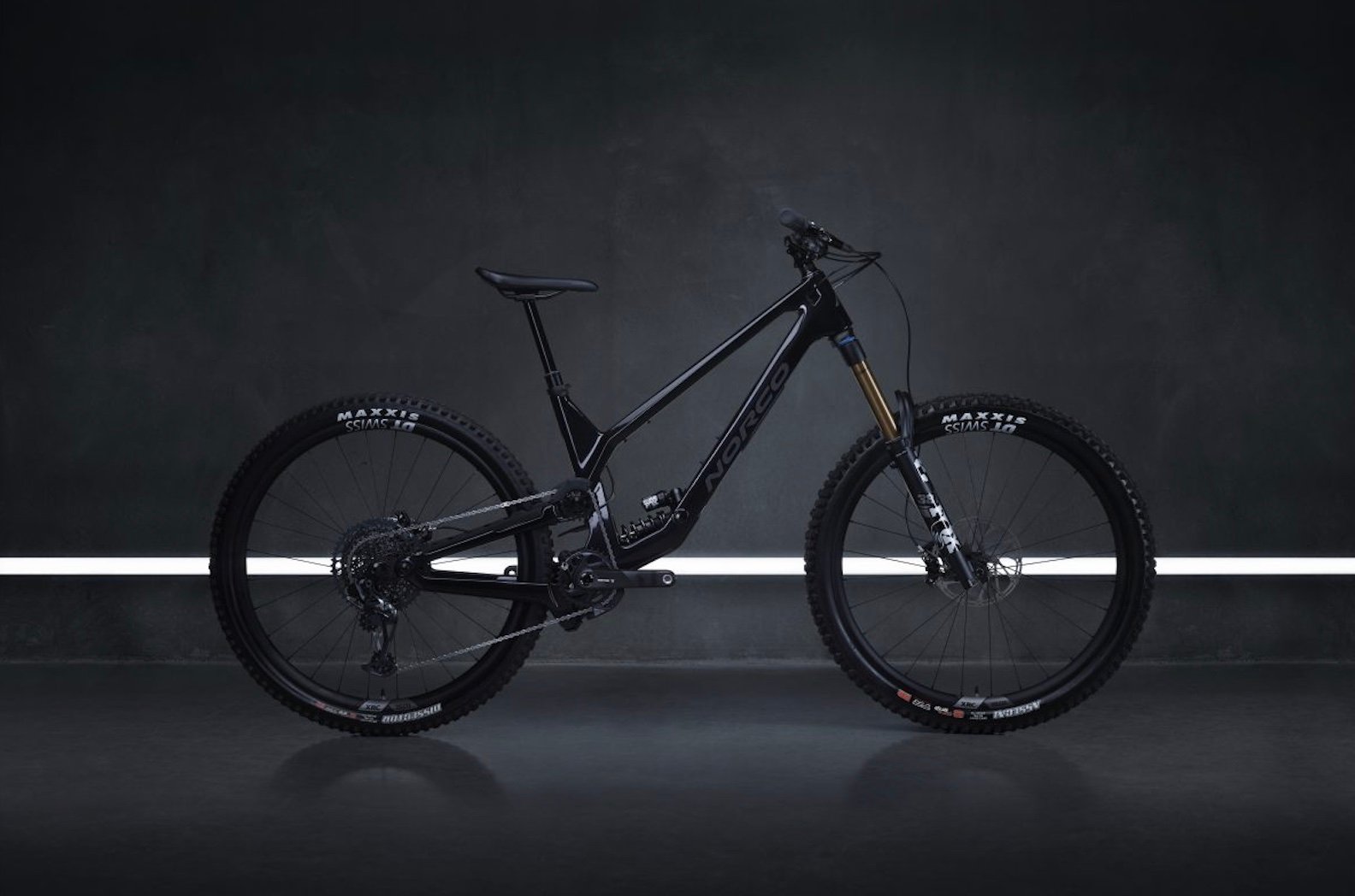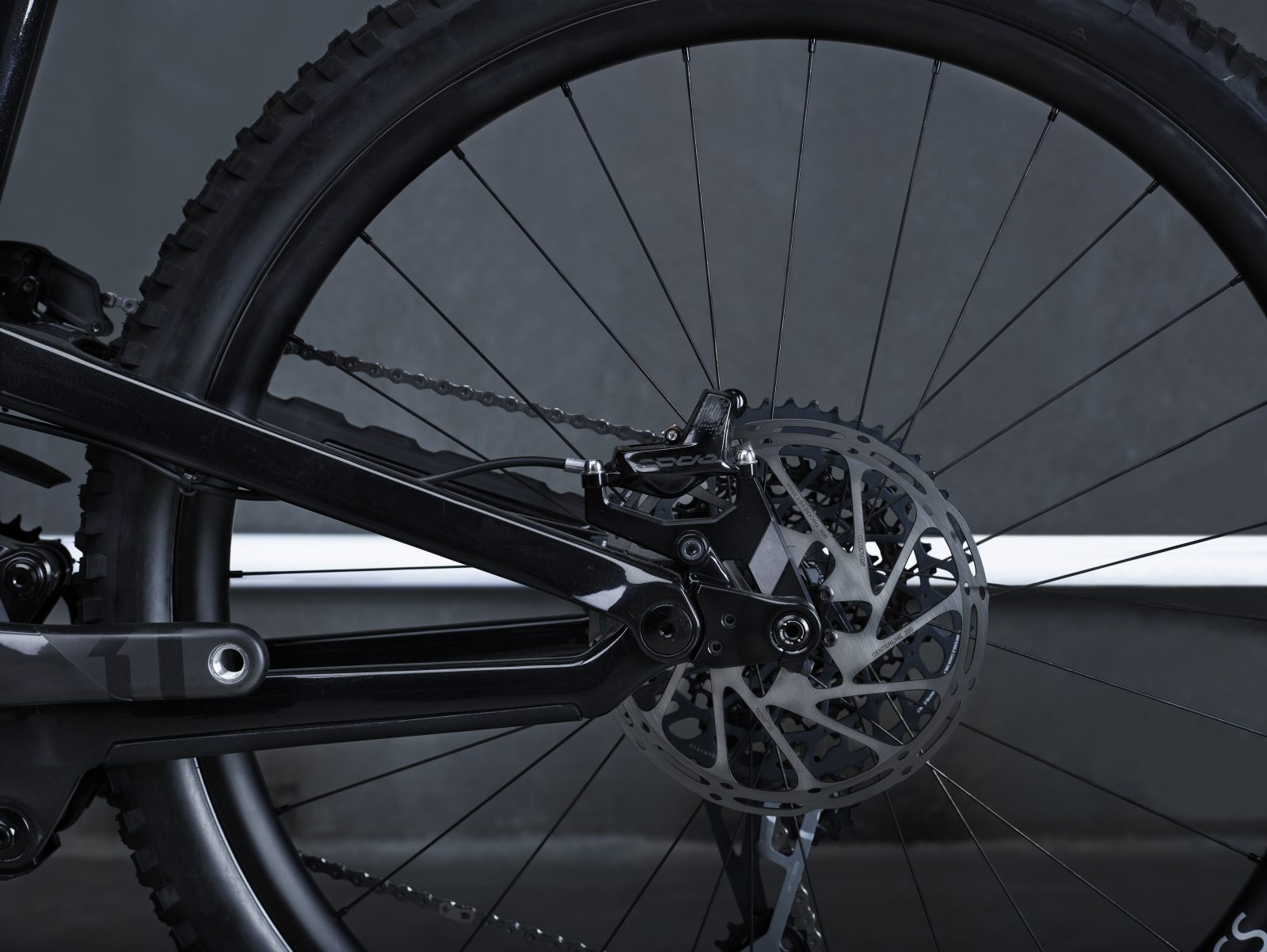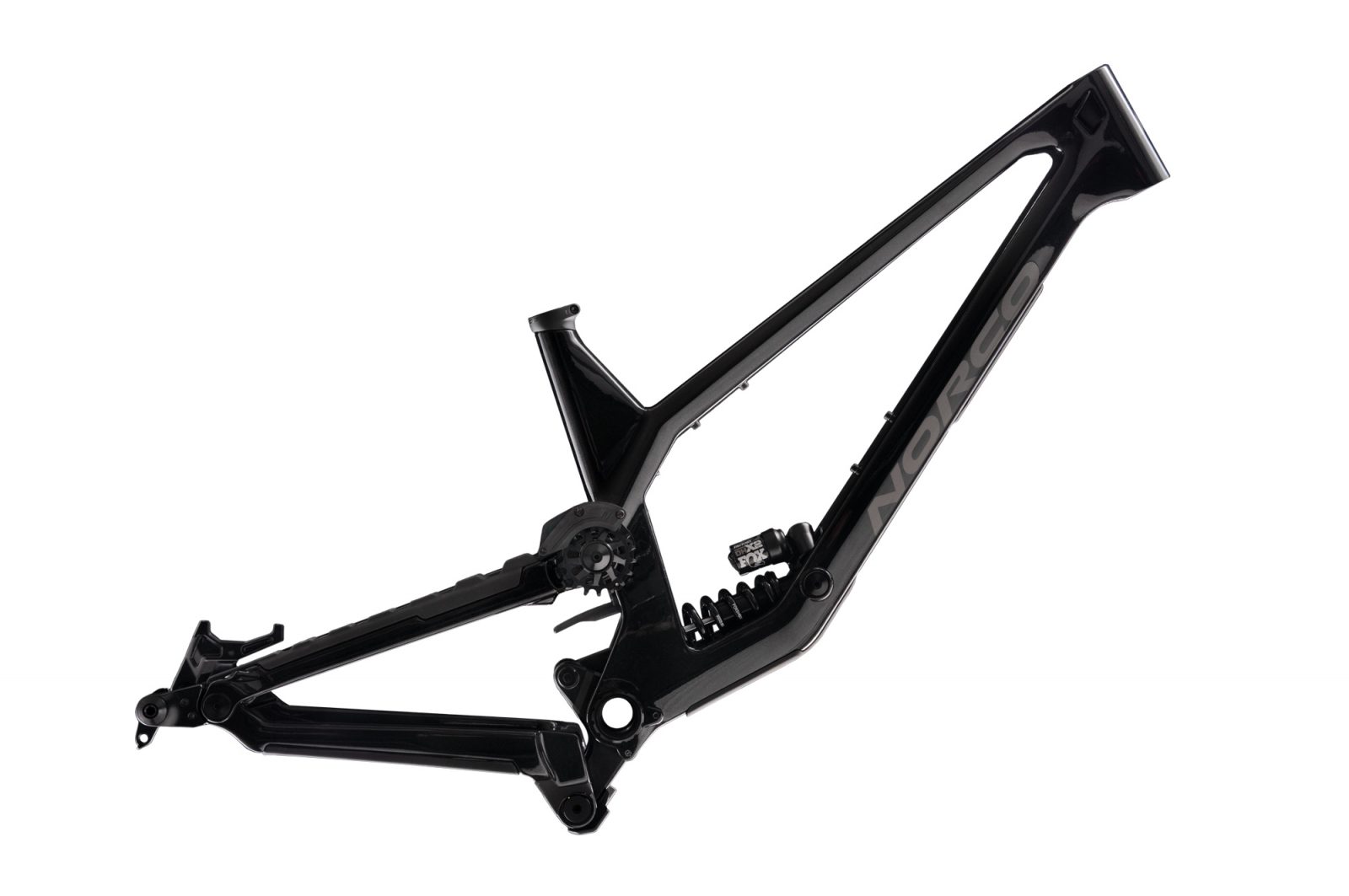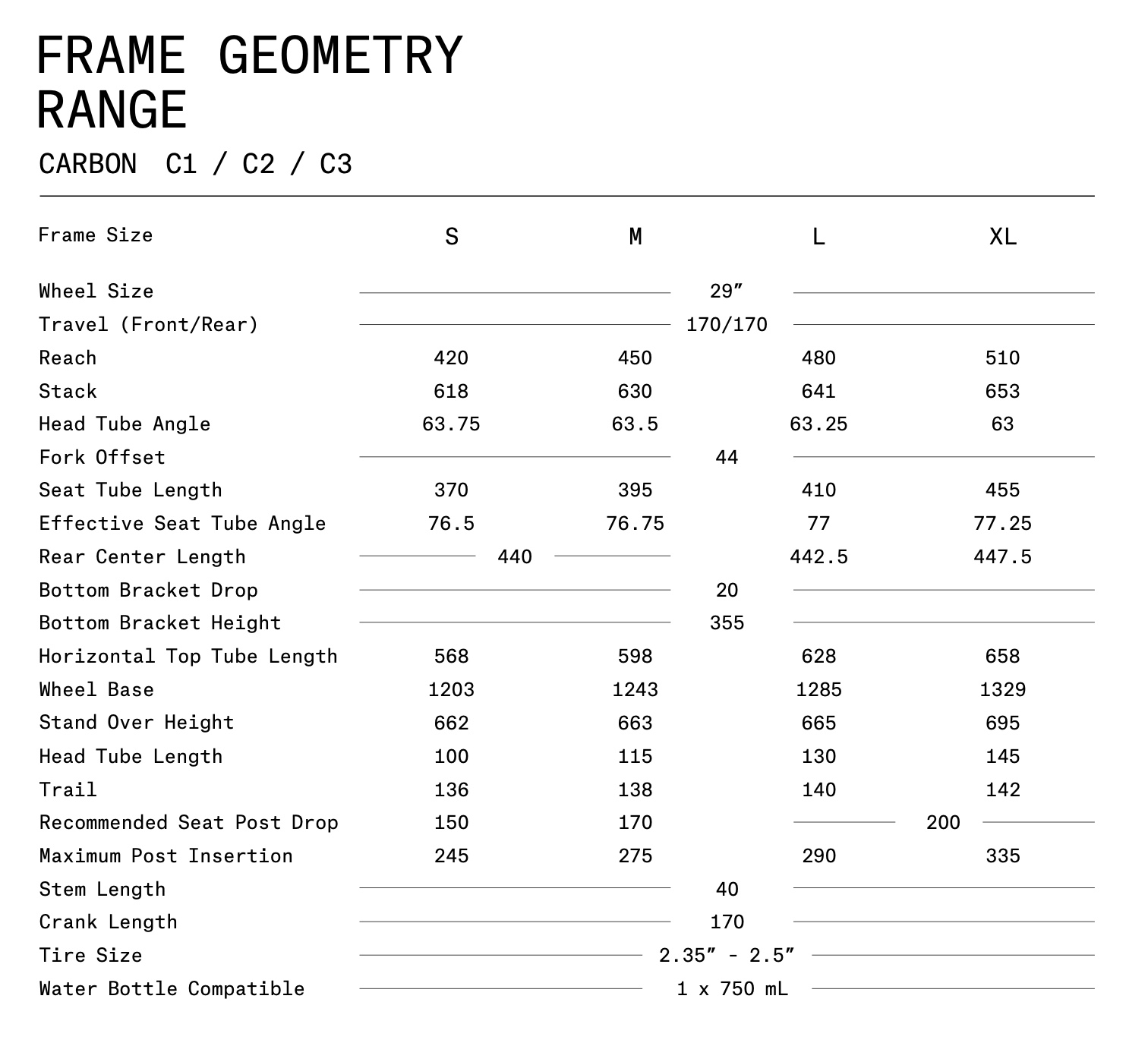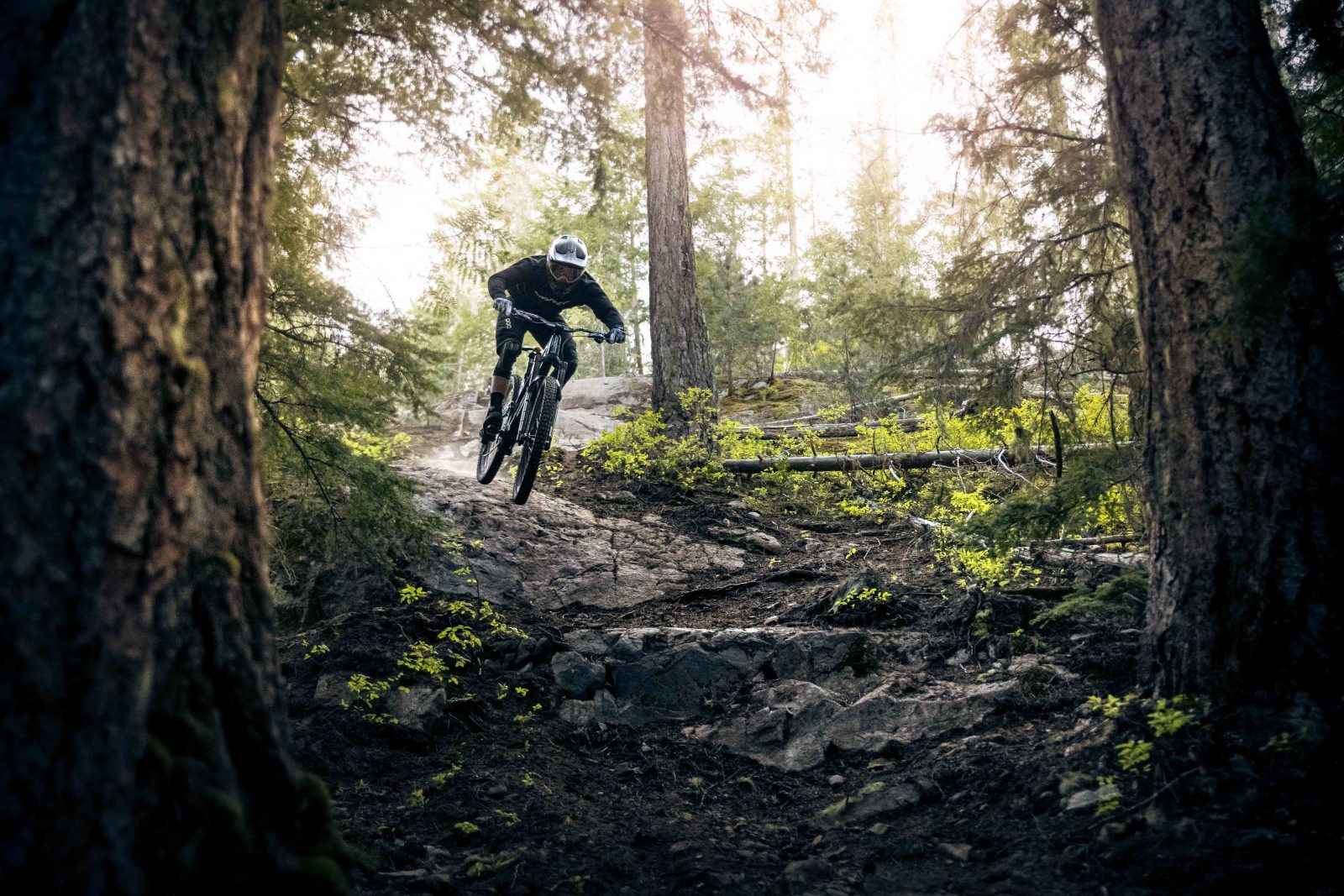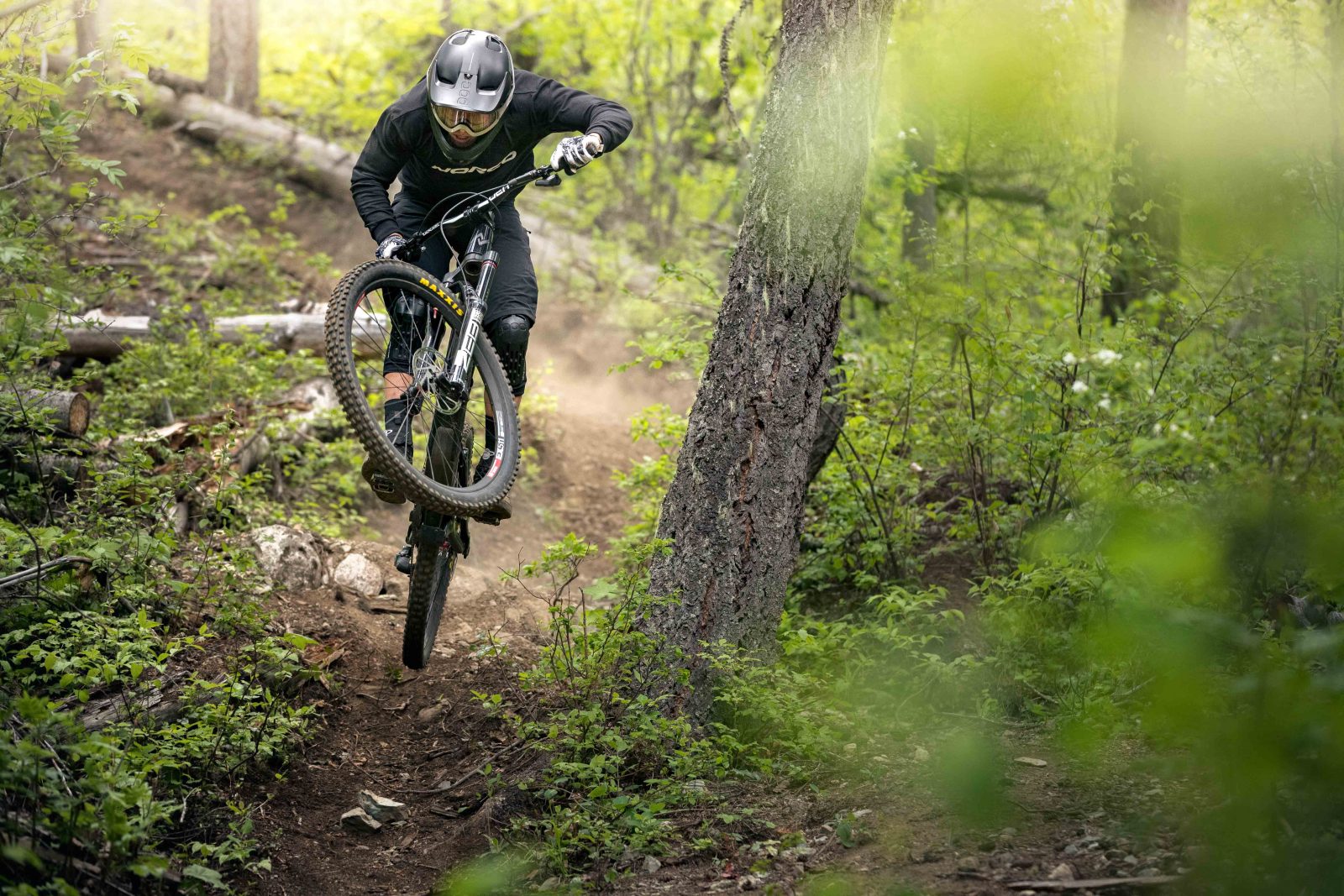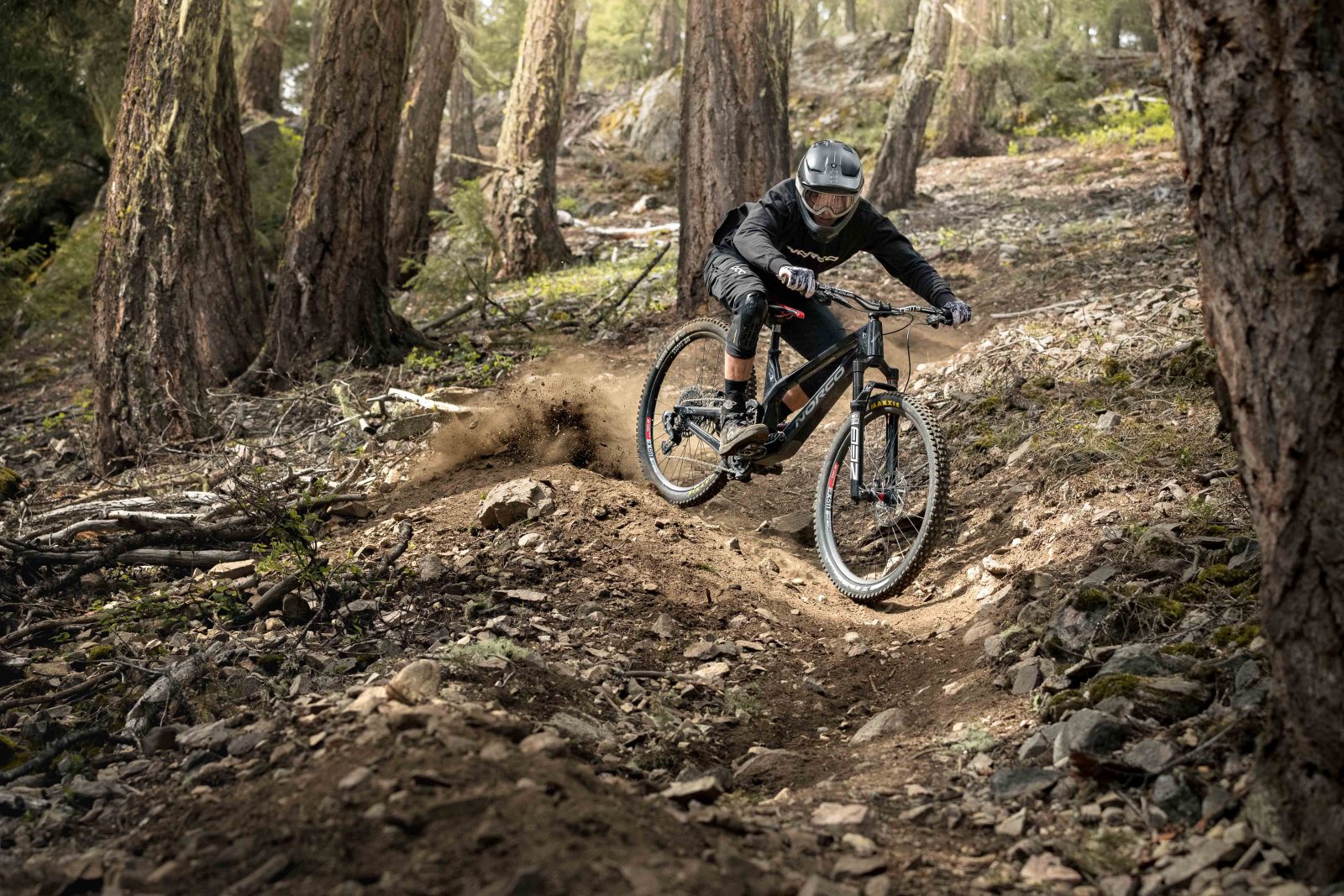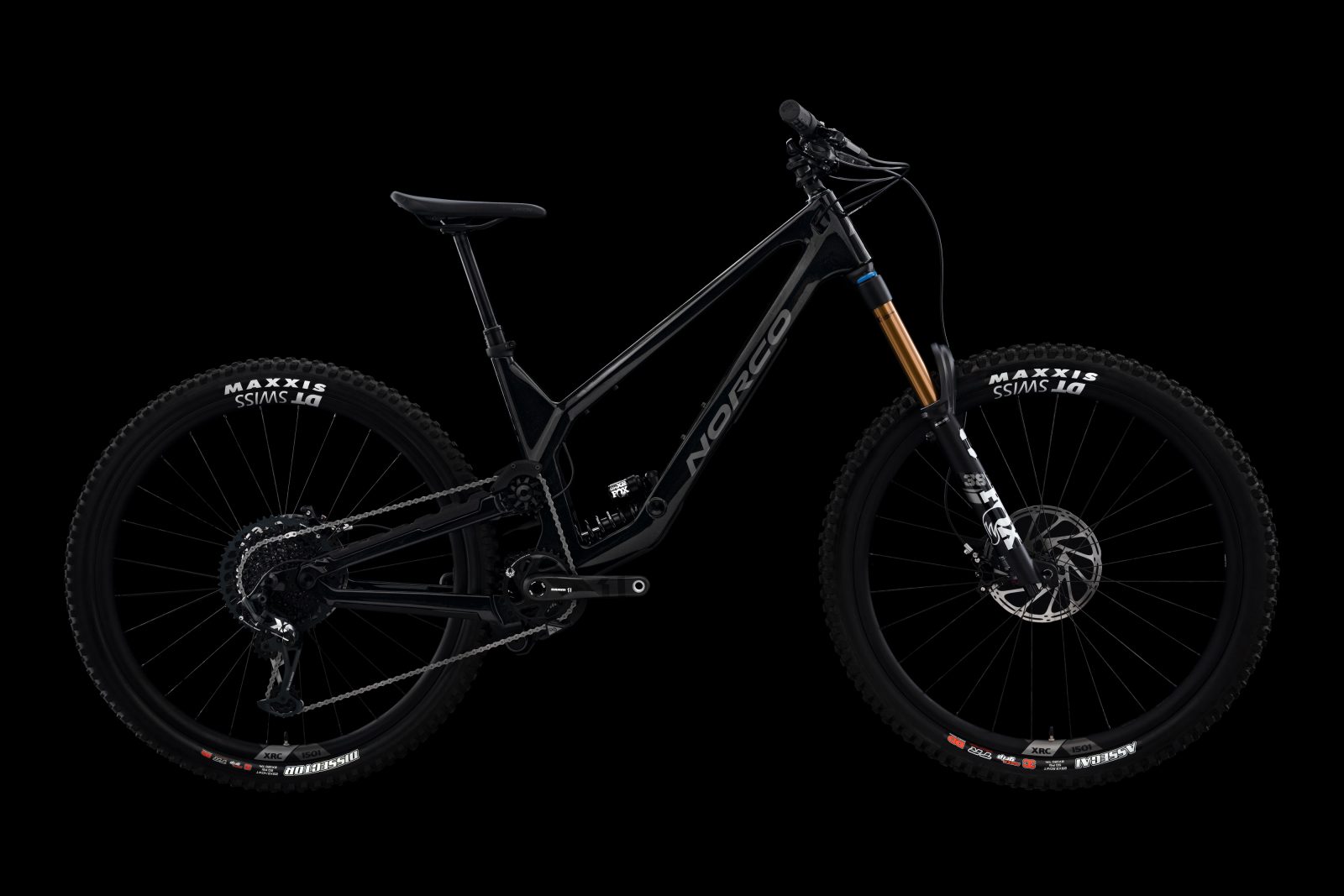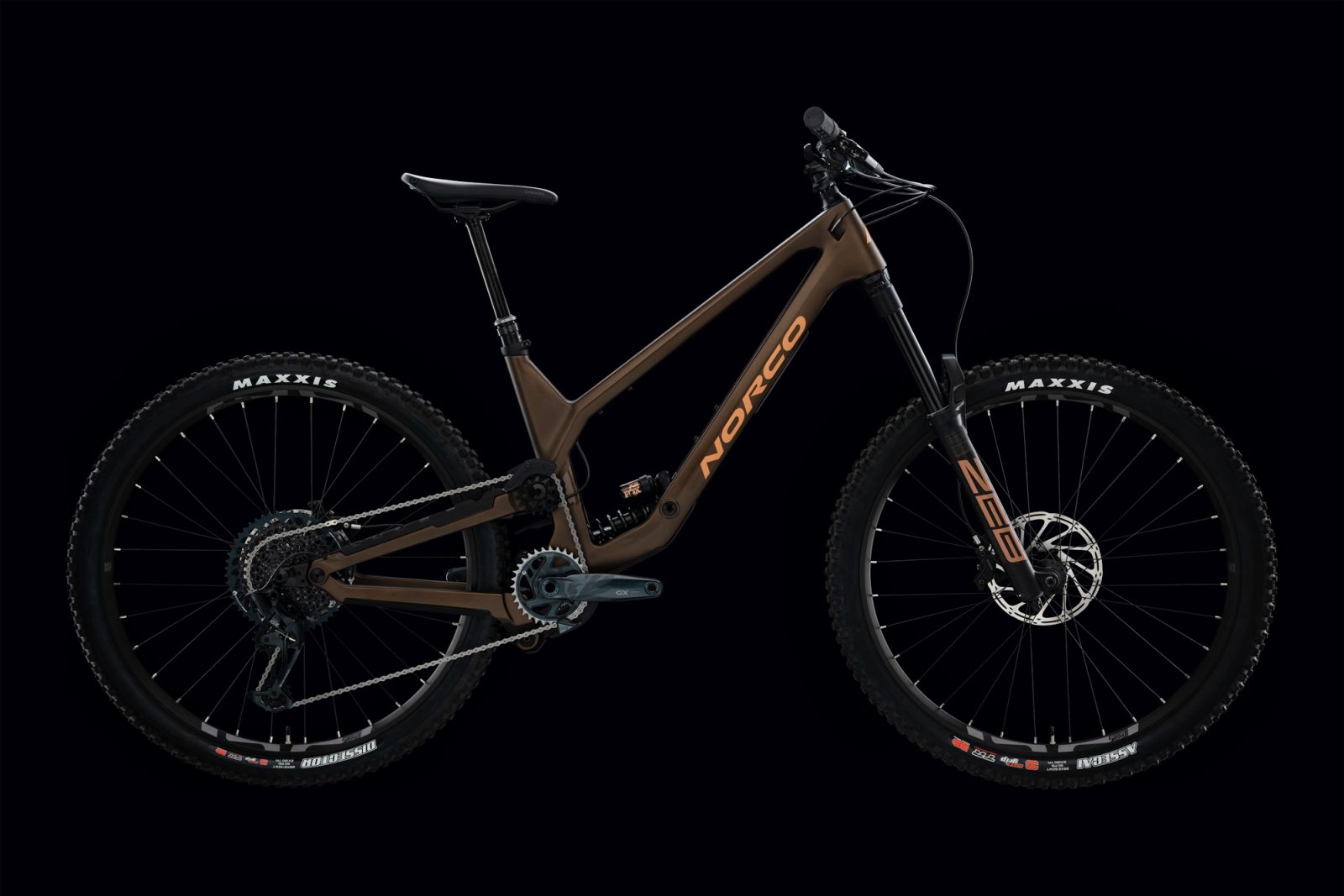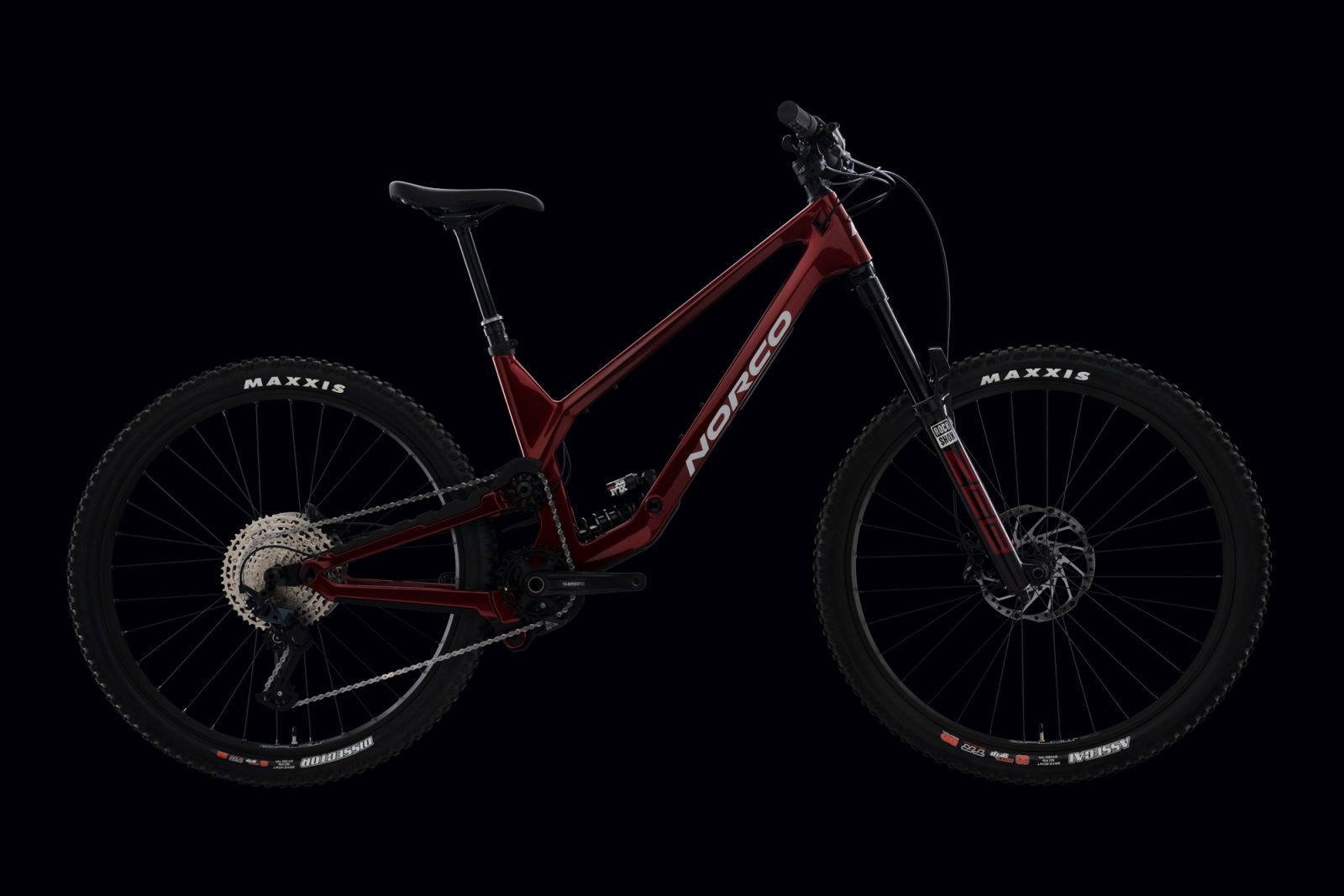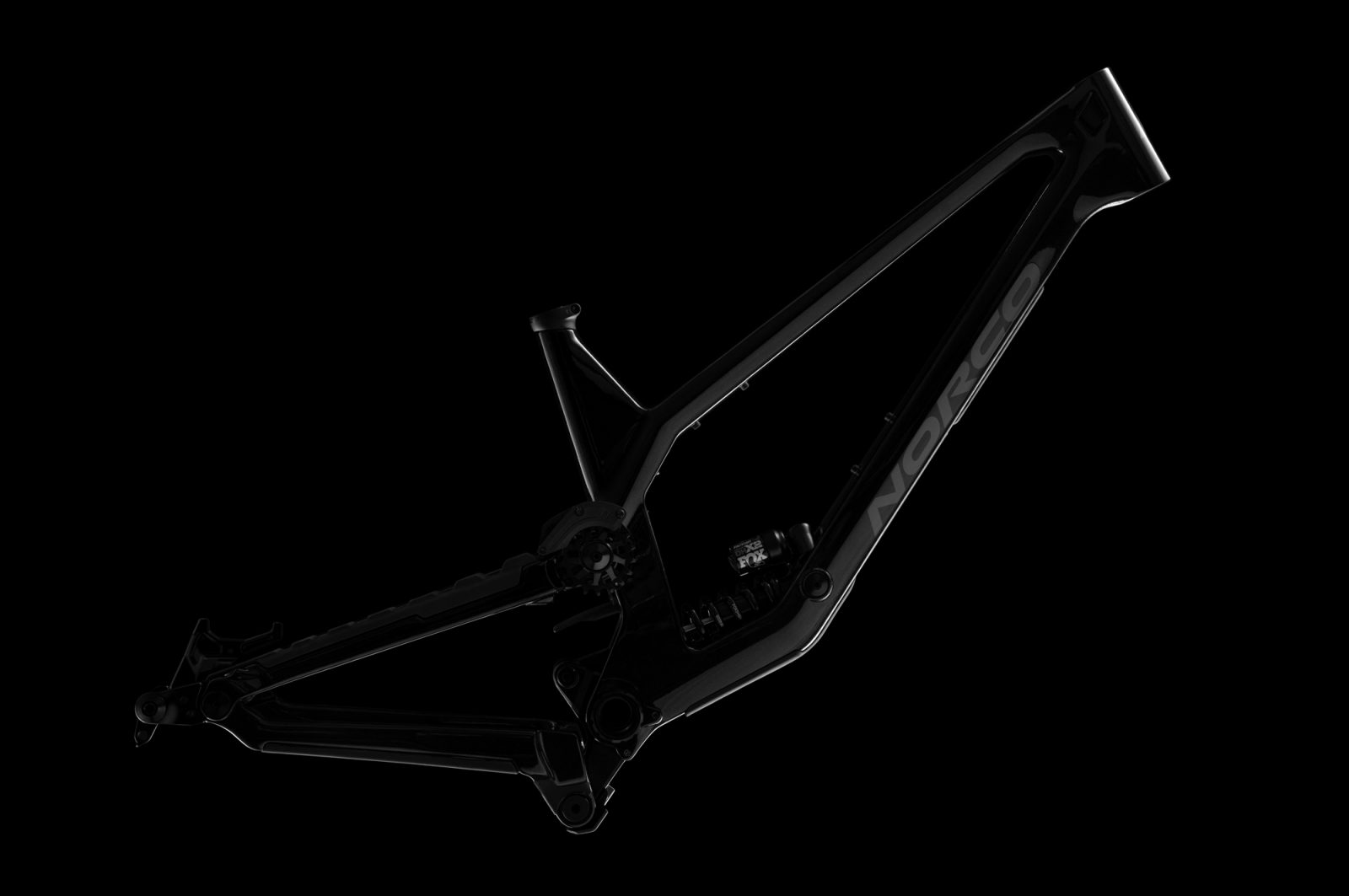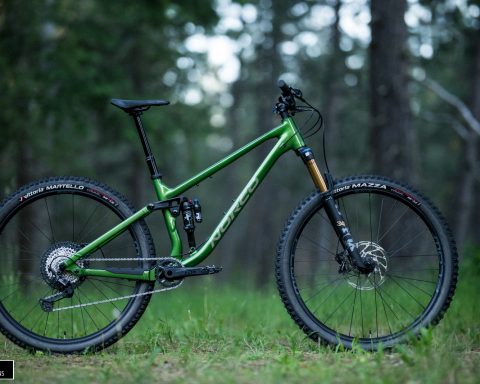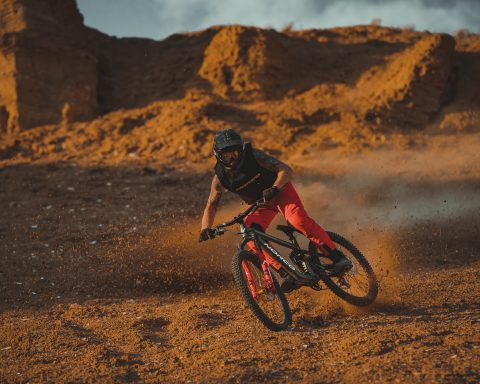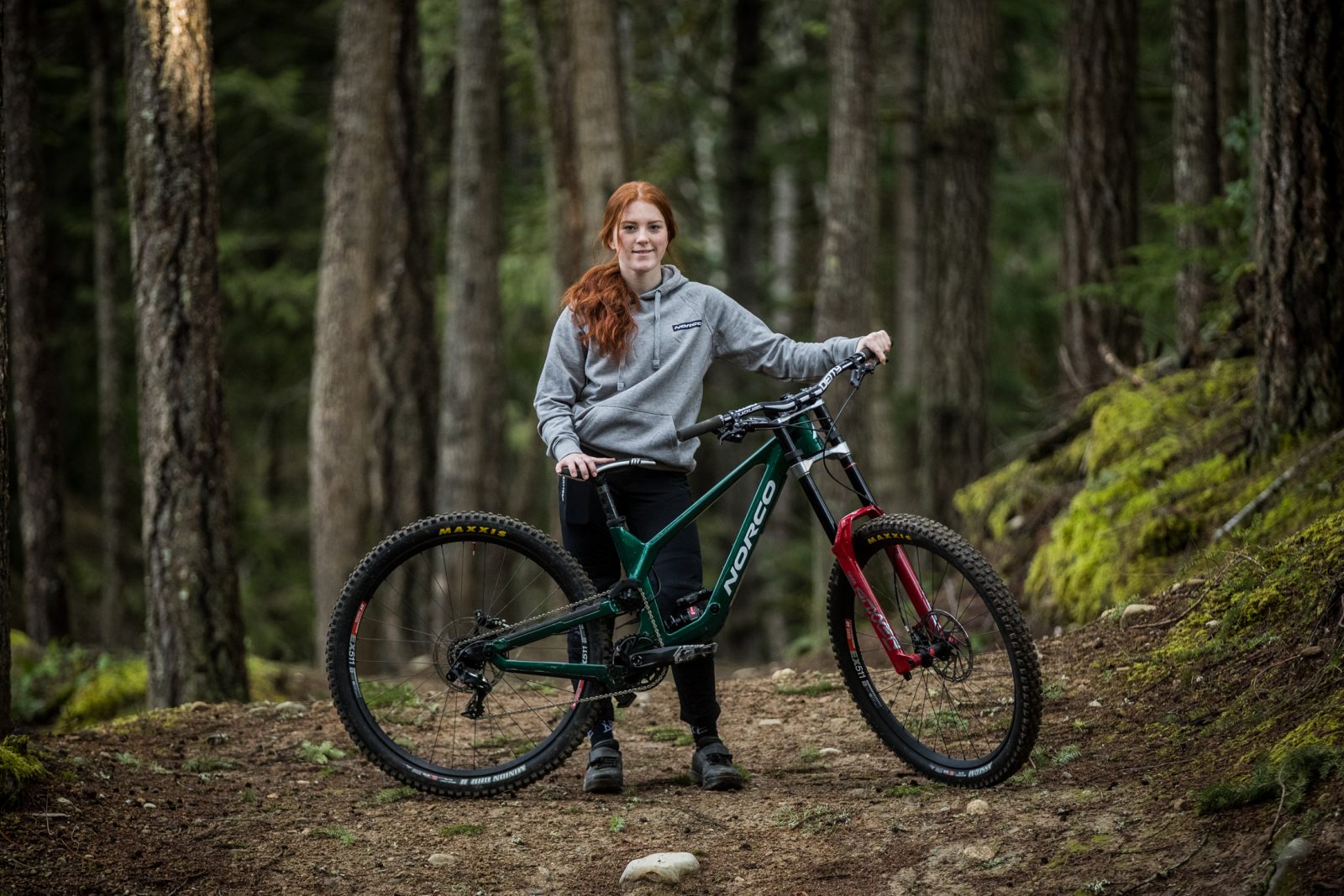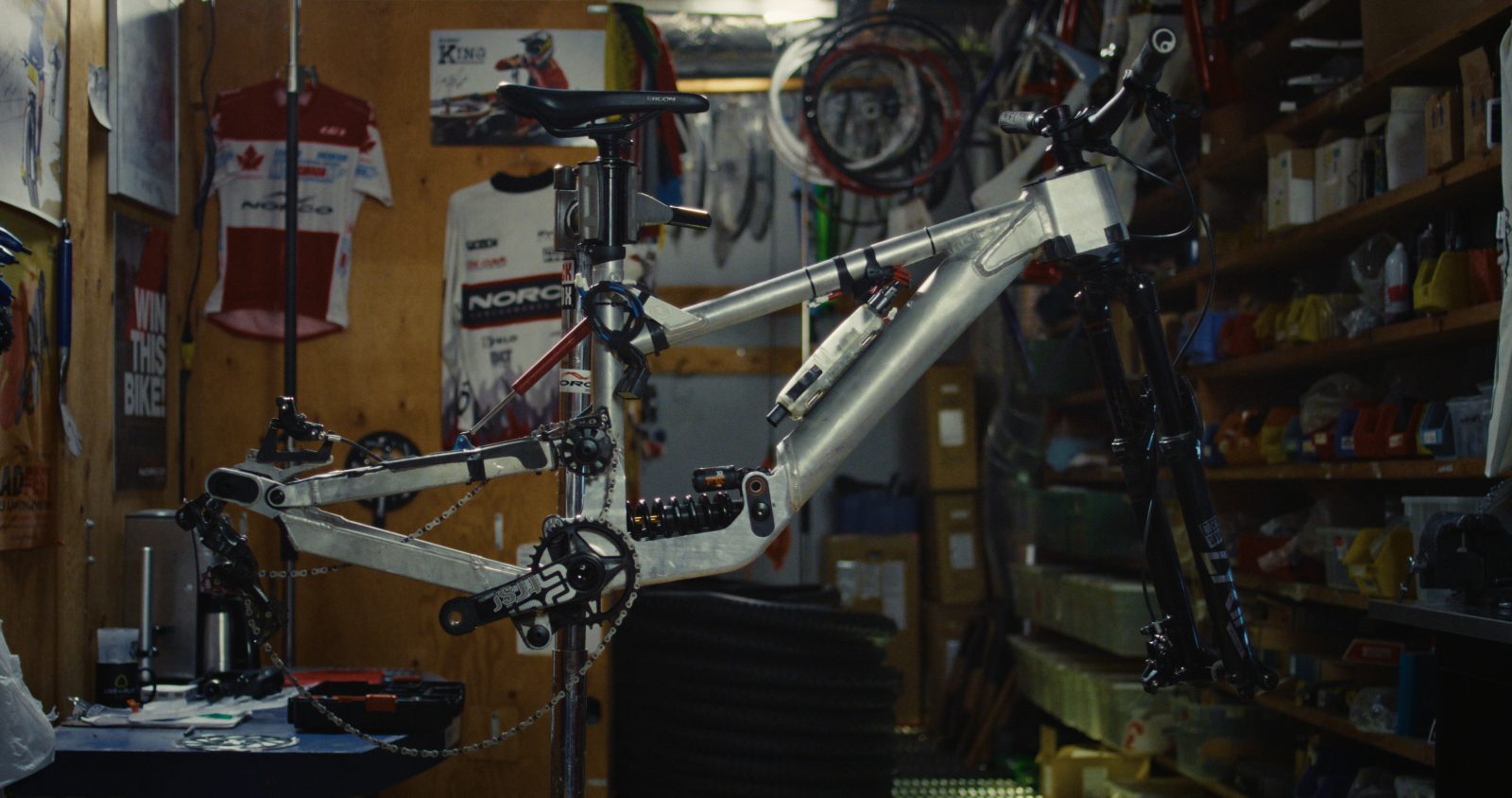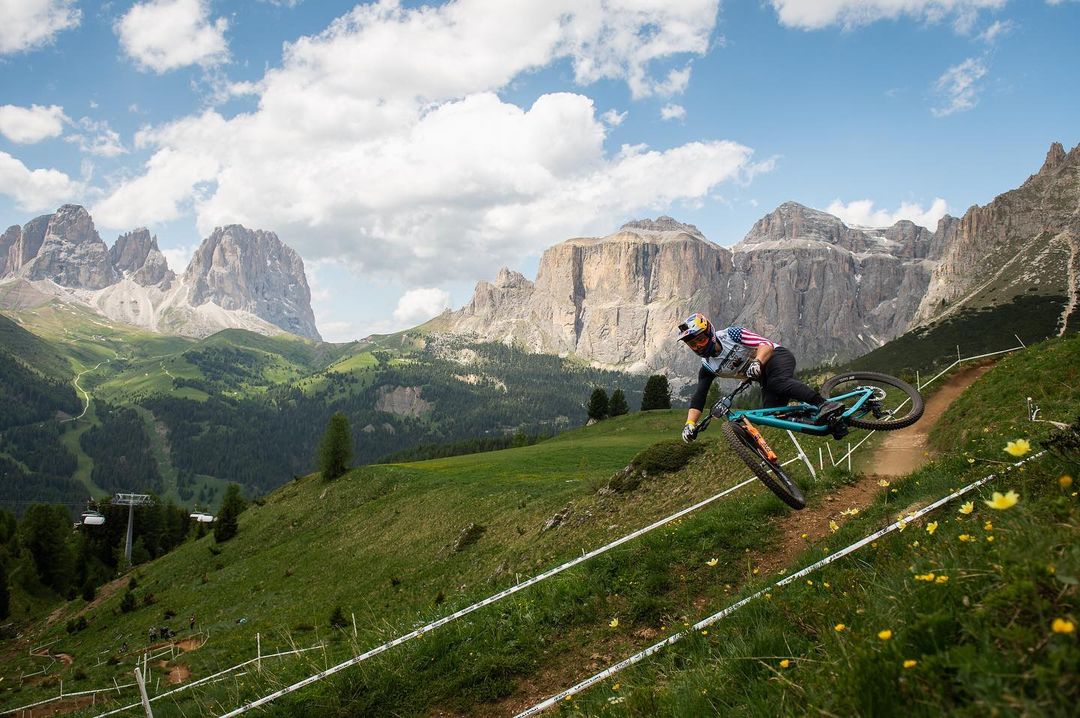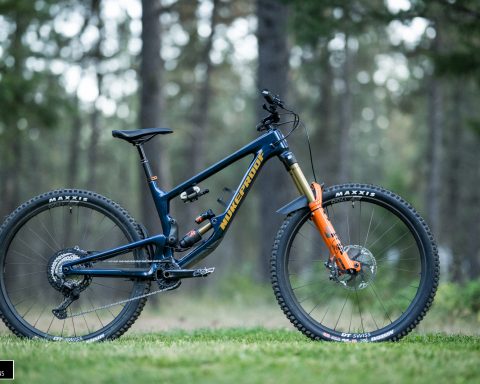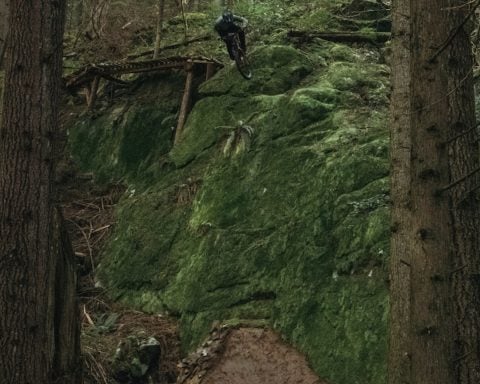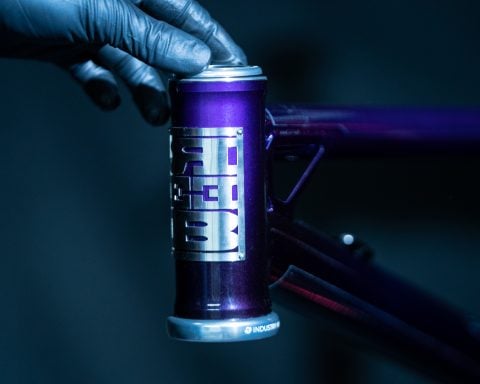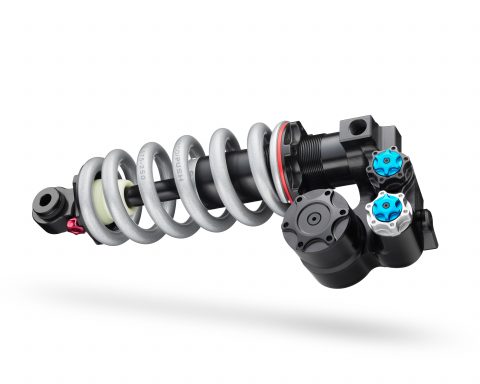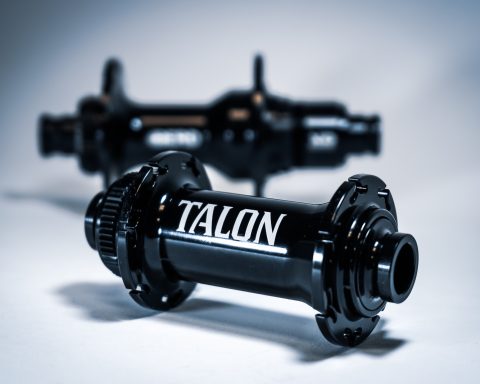Norco has finally announced an all new Range, taking the shape of a high pivot Enduro bike with an idler. We’ve been seeing teases of it for some time now, so it’s exciting to see the finished product. The bike features 170mm travel front and rear and is cleared for a dual crown with up to 180mm of travel. The Range rolls on 29″ front and rear, with Norco recommending against a mullet setup.
Norco has scrapped the HSP design that they worked with for a couple of years in favor of what they now call HVP – high virtual pivot. Per Norco tradition, it also has size scaled geometry where smaller bikes have shorter chainstays, and larger bikes have longer chainstays. Anyhow, read on for the full scoop…
Details
- 29″ front and rear
- 170mm travel front and rear
- 750ml bottle clearance
- Up to 200mm dropper compatible
- Full carbon fiber frame
- S, M, L, XL
Norco holds on to some of the same looks and features from the industrial design of the Sight and Optic as you can see above with the internal cable routing. The graphics as well are similar.
While riders can opt for a single crown or a double crown, the maximum travel with either setup is 180mm.
The brake mount and rear axle are a rather unique setup. That aspect has played a big part in the testing both in the DH and Enduro arena for Norco.
A look at the standalone frameset reveals a better look at the suspension layout. The main pivot is concentric to teh bottom bracket, however, two breaks between it and the rear axle give the suspension a virtual pivot point.
Norco Q&A
AKA: WHAT MAKES THIS BIKE SO DAMN FAST?
Yes, the new Range looks fast AF, but it’s so much more.
It’s a completely new bike designed from the ground-up for the world’s fastest, roughest Enduro courses, and to meet the needs of Big Mountain riders who crave speed on technical trails in the backwoods.
The new design is the result of applying our Ride AlignedTM Design System in a whole new way, specifically to achieve our performance goals for Range, and the meeting the needs of Enduro riders.
Also, this proprietary Norco design process determined that, not only does each frame size benefit from different rear-centre lengths and seat tube angles, but the ideal head tube angle (HTA) is different for every frame size. Slack HTAs offer riders a great deal of protection for rough terrain, but they make it tough for smaller riders to keep their weight over the front tire, so riders benefit from successively steeper angles as frame sizes get smaller.
Fractions of degrees and millimeters may seem insignificant on paper, but on-bike testing confirmed that these seemingly small changes made a big difference in how the different frame sizes performed.
With a blank slate, we made a list of precisely what we wanted to achieve with the rear suspension performance in terms of axle path, shock tune, anti-squat and suspension performance while braking. The Ride AlignedTM process, combined with a completely new suspension design, allowed us to tick all of the boxes – mass is kept low in the frame due to the suspension layout and shock position, active suspension for exceptional tracking in the rough, a balanced level of suspension support front and rear to maintain stable body position in varied terrain, and efficient pedaling on climbs.
WHAT IS THE NEW SUSPENSION DESIGN CALLED? High Virtual Pivot
The High Virtual Pivot design’s pivot point is not fixed and moves as the suspension cycles. This creates a rearward axle path while controlling its path through suspension travel to provide lower levels of anti-rise than would be possible with a HSP layout of similar axle path. This translates into a suspension that carries momentum exceptionally in rough terrain due to its axle path but remains active under braking to maintain grip and control.
WHAT KIND OF MAINTENANCE WILL BE REQUIRED TO KEEP THE RANGE’S SUSPENSION WORKING ITS BEST?
In developing the Range, we worked closely with Norco Factory Team mechanics to ensure that it’s simple to maintain, and easy to work on in a race environment.
Bearings are easily replaced, hardware is robust, and processes are straightforward.
This design requires no more maintenance than any other suspension frame. Verify pivot bearings are smooth, ensure bolts are torqued to spec, and clean it with soapy water after you get it dirty.
WHY IS THE RANGE ONLY MADE IN CARBON FIBRE?
Because of the shapes and profiles of tubes and frame components used to achieve the Range’s High Virtual Pivot suspension design, carbon fibre construction is the ideal material to achieve the strength, durability and performance we needed to build into the Range.
WHY DOES THE RANGE HAVE 29 INCH WHEELS FRONT AND REAR?
We engineered the Range to be the fastest Enduro bike available – and our testing consistently shows that 29” wheels roll faster in the conditions riders face on most Enduro race courses.
With Range, even the smallest riders benefit from 29” wheels front and rear. Riders can stay centred on the bike, even in the steepest, nastiest terrain, and the rearward axle path gets the 29” wheel back out of the way to avoid rider contact under heavy compression.
While a 27.5” wheel can theoretically fit the frame, doing so will have
a significant effect on the geometry we’ve engineered into the Range. In order for a “mullet” bike to ride properly, the smaller rear wheel must be designed-in from the outset.
WHAT PROMPTED THE MOVE AWAY FROM THE HIGH SINGLE PIVOT (HSP) DESIGN?
Norco re-defined how riders perceive high pivot bikes with the Aurum HSP. When we introduced it, it was a state-of-the-art, Factory Team-proven solution that confirmed how a rearward axle path helps maintain momentum in the rough while minimizing drivetrain kickback.
In the years since its introduction, technology has progressed. Our research and Factory Team development confirms that the Range’s High Virtual Pivot design allows a comparable rearward axle path to HSP while allowing the rear suspension to remain more active under braking than is possible with high single pivot designs.
WHY DOES IT NEED AN IDLER?
Due to Range’s rearward axle path, the distance between the rear axle and BB grows considerably as the suspension moves through its travel. Routing the chain directly between the BB and cassette with this axle path would result in a dysfunctional level of anti-squat and significant chain growth causing excessive pedal kickback. Routing the chain around an idler in a location that minimizes chain growth better isolates the rider from inputs at the rear wheel, resulting in reduced rider fatigue. Additionally, the ability to control anti-squat with idler location provides a stable platform when pedaling.
WHAT IS THE MAINTENANCE REQUIRED FOR THE IDLER?
The idler rotates on precision sealed cartridge bearings. Over time, it’s foreseeable that these bearings, and the teeth may experience wear, like any other drivetrain component.
Periodic verification of smooth operation can be performed by disengaging the chain and spinning the idler. If it exhibits noise, lateral play, or excessive resistance, the bearing can be pressed out and replaced. If the teeth exhibit excessive wear, the entire idler is replaceable.
HOW DO YOU MAINTAIN CONSISTENT SUSPENSION KINEMATICS BETWEEN SIZES WITH VARYING CHAINSTAY LENGTHS?
Maintaining proportional rear centre (RC) lengths across frame sizes is a key parameter of our Ride AlignedTM Design System.
RC length adjustment on Range is accomplished with size specific dropouts. Implementing RC adjustment in this way requires an adjustment to pivot locations at the linkarm
to ensure the leverage curve is identical across all frame sizes. Without adjustment
at the linkarm, the variation in RC length across sizes would alter the leverage
curve and the ride characteristics of the bike as a result. For this reason, we have designed Range with size specific linkarms that should not be interchanged between sizes. Interchanging dropouts and linkarms between frame sizes will compromise the ride characteristics of the bike and the accuracy of the recommended Ride AlignedTM suspension settings.
With so many “flip chip” suspension designs entering the marketplace, we understand that the temptation to mix and match is high. The new Range’s suspension is highly calibrated with a custom-tuned shock and size-specific leverage curves so it can be precisely-tuned as we’ve engineered it, so there’s no need to mess around with chips or links.
HOW DO I PRECISELY TUNE A COIL SPRUNG REAR SHOCK?
The Ride AlignedTM Setup Guide for Range provides recommendations for rear shock spring rates in both 50 lbs/in increments and 5 lbs/in increments.
While coil springs are most commonly available in 50 lbs/in increments, certain riders find these jumps can provide a setup that feels too soft or too firm depending on their body weight, weight distribution, skill level and trail conditions.
By providing spring rate recommendations in 5 lbs/in increments, these detail-oriented riders can find the extra level of precision they’re looking for in their suspension setup.
We’ve found adjustable-rate springs such as those available from Sprindex to be excellent tools for dialing-in this level of rear shock spring rate.
WHAT REAR SHOCKS CAN I RUN IN THE RANGE?
The Range is optimized and tuned to match the linear spring rate of a coil spring, and the frame is optimized to fit the structure of 2021-22 Fox DHX2 and 2021-22 RockShox Super Deluxe Coil shocks. It’s possible that other aftermarket shocks simply will not fit on the Range, whether coil or air.
Also, because the stock DHX2 shock features a linear spring rate with a custom damping tune, mounting other coil or air sprung shocks will negatively affect the ride quality and precision we’ve engineered-in.
CAN I RUN A DUAL CROWN FORK?
While the Range is optimized for a single crown fork, some riders may want to run a dual crown.
We have extensively tested the Range on the trail and in the lab, confirming it can be run with forks up to 180mm in both single crown and dual crown configurations. So, riders have options depending on their terrain and preferences, without voiding warranty.
WHAT IS THE NORCO FACTORY TEAM RUNNING FOR DH?
During the development process with the Range, we recognized that the traits that made the High Virtual Pivot suspension layout perfect for Enduro would also be well-suited to the performance requirements of a World Cup DH bike. While our initial testing of Range as an Enduro platform shaped the starting point for the downhill bike, the feedback we received from the Norco Factory Team riders on the downhill prototypes was instrumental in defining the final kinematics for Range.
The bolt-on rear dropout design offered a unique opportunity to adapt the geometry of Range to be appropriate for downhill without the need to alter carbon frame components, (In fact, that’s why you can see the bottle mounts in all those highly-analyzed video stills after the DH proto debuted at Crankworx last summer!) so we designed linkarms specific to downhill that provided the wheel travel and leverage curves required for the demands of World Cup courses and the Norco Factory Team’s fastest riders.
Through extensive testing and iteration with our team, we arrived at a prototype that was ready to compete at the highest level of downhill racing.
Specs
Range C1
*Due to supply chain distruptions, the Range C1 will be specced with the following wheelset:
RIMS: We Are One Union Enduro 29″ Carbon Wheelset
FRONT HUB: Onyx Vesper, 15x110mm Boost, 6 Bolt
REAR HUB: Onyx Vesper, 12x148mm Boost, XD, 6 Bolt
SPOKES/NIPPLES: DT Swiss Stainless
Range C2
Range C3
Range Frameset

